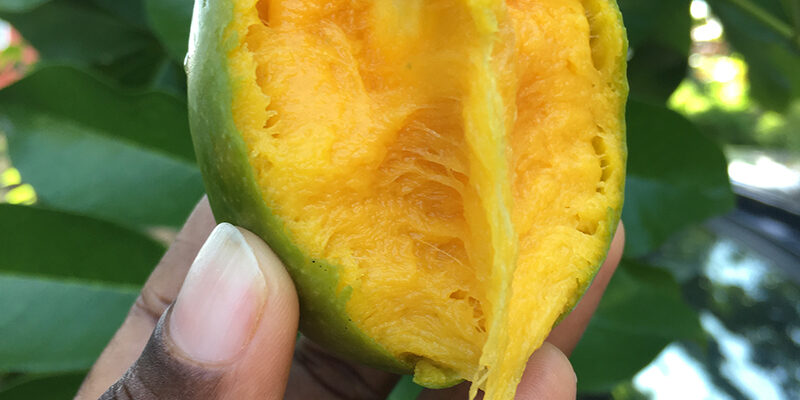For a stranger to Jamaica, it would be easy to tell when it’s mango season on the island.
Along the street sides of major towns, you will find vendors with trays, bags or boxes of mangoes, for the most part willing to negotiate a price for the delicious, juicy, meaty fruits.
And if you’re driving along a country road, it’s not uncommon to come upon a section of the road littered with mangoes that had fallen from over hanging trees.
Typically, any time between April and September, mangoes could be in season in Jamaica.
Now, if a Jamaican should get lost in the countryside, he wouldn’t mind, as long as it’s mango season and the fruits are accessible.
That assertion sums up the passion that Jamaicans have for mangoes and one would readily tell you that “Mango season nice!”
Growing up as a kid in rural Jamaica, the best part of summer would be going to mango “walk” (when used this way, “walk” is a Jamaican term for orchard) to gather mangoes and then eating them right there underneath the tree.
Usually in a mango walk you will find species such as Number 11, Stringy, Green Gauge or Sweetie, as these are the types that are mostly available across the Jamaican landscape and would also fetch a lower price in the market place.
The more expensive types, such as Julie and East Indian, are usually grown in a more protected environment and would not necessarily be found in a mango walk.
Nutritionally, mangoes offer high value for money. They are rich in vitamins A, B6, C, E and K, niacin, folate, thiamine, riboflavin, potassium, magnesium, calcium, iron and more. Jamaicans just eat ‘em for the love of it!







